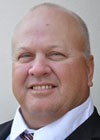Queensland State Election 2012: Hunchinbrook
Electorate: Hinchinbrook
Margin: Liberal National 14.7%
Region: Northern Coast
Federal: Kennedy/Herbert
Click here for Electoral Commission of Queensland map
The candidates
 |
PAMELA MONAGHAN
|
|
|
Electorate analysis: Hinchinbrook covers about 200 kilometres of north Queensland coast to the north of Townsville and the south of Innisfail. It was created in 1950, and has been held by the Country Party and its successors for all but the first 10 years of its existence. The 1991 one-vote one-value redistribution removed the electorate’s rural hinterland and limited it to coastal areas, making it notionally Labor going into the 1992 election, but Nationals member Marc Rowell retained the seat before handsomely consolidating with a 12.1 per cent swing in 1995. The One Nation onslaught cut 26.1 per cent from Rowell’s primary vote in 1998 which did not return to him in 2001, but he nonetheless kept his head above water on both occasions. Labor preferences were of great assistance to him on the first occasion, but their “just vote one” strategy almost starved him in 2001. Rowell won far more comfortably in 2004, gaining 13.0 per cent of the primary vote directly at One Nation’s expense. Hinchinbrook councillor and independent candidate Andrew Lancini was a factor in the 2001 and 2004 elections, respectively polling 17.4 per cent and 21.4 per cent.
Rowell retired at the 2006 election and was succeeded by his 25-year-old media and research assistant, Andrew Cripps, who won preselection ahead of Hinchinbrook Shire deputy mayor Arthur Bosworth. While Cripps harvested an extra 9.6 per cent of the primary vote in Lancini’s absence, he suffered a sharp 7.2 per cent swing on two-party preferred, with the Labor primary vote up from 24.2 per cent to 43.1 per cent. This was more than reversed in 2009, when the seat recovered its traditional safe conservative orientation with a 12.7 per cent swing to Cripps. This may have been fuelled by the admission of Labor candidate Mark Platt that he had “only ever driven through the electorate”, and had no immediate plans to correct this.
Cripps served as a parliamentary secretary from January 2008 until he was overlooked in the rearrangement which followed the LNP merger the following August. He had to wait little more than a month to be handsomely compensated for his loss with the position of Shadow Natural Resources and Water Minister. His portfolio responsibilities have been redrawn with each of the three major reshuffles since the 2009 election: first to disability services and multicultural affairs, then to North Queensland, reef protection, Aboriginal and Torres Strait Islander economic development and public works in the November 2010 reshuffle, and finally to agriculture, food and regional Queensland when Campbell Newman became leader in April 2011.
Cripps will be challenged at the coming election by Katter’s Australian Party candidate Jeff Knuth, who won Burdekin for One Nation in 1998 and unsuccessfully contested the 2001 election as a candidate for the ill-fated breakaway City Country Alliance. Knuth’s brother Shane Knuth is the member for Dalrymple and will also contest the election as candidate of Katter’s Australian Party, after defecting from the LNP in November 2011.
 A ReachTEL automated phone poll of 417 respondents, conducted for Katter’s Australian Party a fortnight out from the election, had Andrew Cripps with 43 per cent of the primary vote, Jeff Knuth with 33 per cent and Labor with 17 per cent. An LNP source quoted by Sarah Elks of The Australian in the final week of the campaign said its polling showed it would “safely win”.
A ReachTEL automated phone poll of 417 respondents, conducted for Katter’s Australian Party a fortnight out from the election, had Andrew Cripps with 43 per cent of the primary vote, Jeff Knuth with 33 per cent and Labor with 17 per cent. An LNP source quoted by Sarah Elks of The Australian in the final week of the campaign said its polling showed it would “safely win”.
Analysis written by William Bowe. Please direct corrections or comments to pollbludger-AT-crikey.com.au. Read William’s blog, The Poll Bludger.


